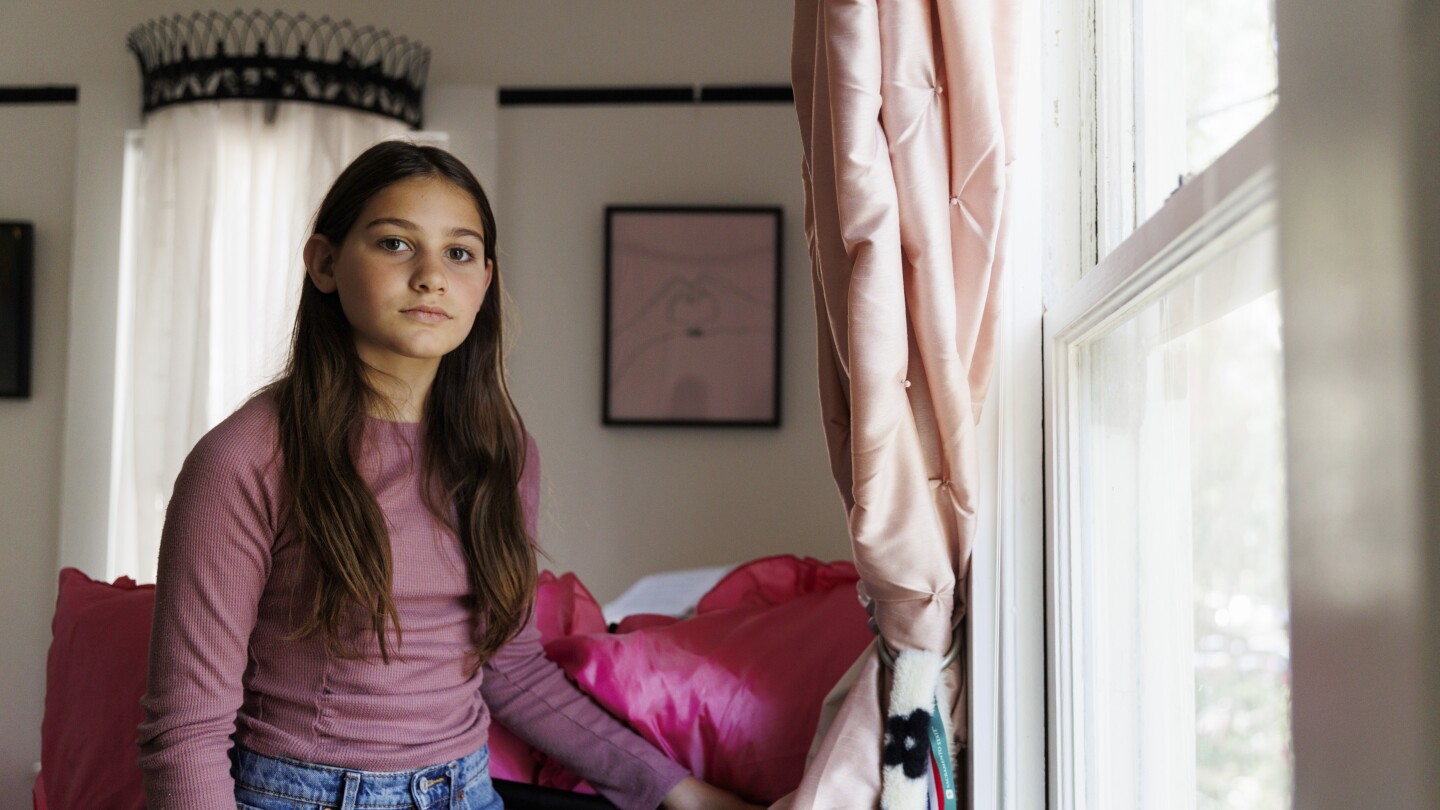When she was in fifth grade, Scarlett Goddard Strahan started to worry about getting wrinkles.
By the time she turned 10, Scarlett and her friends were spending hours on TikTok and YouTube watching influencers tout products for achieving today’s beauty aesthetic: a dewy, “glowy,” flawless complexion. Scarlett developed an elaborate skin care routine with facial cleansers, mists, hydrating masks and moisturizers.
One night, Scarlett’s skin began to burn intensely and erupted in blisters. Heavy use of adult-strength products had wreaked havoc on her skin. Months later, patches of tiny bumps remain on Scarlett’s face, and her cheeks turn red in the sun.
“I didn’t want to get wrinkles and look old,” says Scarlett, who recently turned 11. “If I had known my life would be so affected by this, I never would have put these things on my face.”
The skin care obsession offers a window into the role social media plays in the lives of today’s youth and how it shapes the ideals and insecurities of girls in particular. Girls are experiencing high levels of sadness and hopelessness. Whether social media exposure causes or simply correlates with mental health problems is up for debate. But to older teens and young adults, it’s clear: Extended time on social media has been bad for them, period.



(I swear to god I’m not trying to be antagonistic here, I just really like hearing myself talk: )
I think what you’re saying is that, taken in a vacuum, exposure to tiktok is a net negative vs. not having access to tiktok. And I think that from a certain perspective you could very well be correct. I also think you’ve misunderstood me; when I said ‘socially isolated’ I was referring to the near-total social isolation that comes with being unable to access the internet as a modern youth, not just ‘not being able to use tiktok’, which I should perhaps have caught on to and clarified earlier. I agree that tiktok is, on the whole, better for a person not to use. I think we’re broadly in agreement here, though I’m a advocate of the ‘all things in moderation’ school of thought, and a firm supporter of harm reduction (please don’t jeer too much…).
There’s two things I’d like to say, though. The first is that there is no possible way to objectively assess a means of socialization on a Best <> Worst scale, nor is there a way to identify what a ‘personal element’ is. I’m going to assume, hopefully correctly, that you’re in the 20+ age bracket here, and that you did not grow up with digital communication as a particularly large segment of your childhood social interaction. Assuming this lets me point to it as a very reasonable explanation of why you’ve wound up at the conclusion that human interaction has anything built-in, because alternative forms of communication were extremely niche until the “digital revolution” that the millennials and zoomers have experienced growing up.
Human interaction is a wholly learned behavior, one that we get the foundations for during childhood and then find incredibly difficult (or nigh impossible) to re-learn as adults. The reality we are facing (haha) is that children who primarily communicate digitally have developed tone indicators and expressions wholly alien to people unused to the medium. They aren’t missing out on a chunk of human interaction, they’re just interacting differently than what used to be the norm. They may be worse at face to face communication, but that is getting less and less important as we transition to a more connected society. Wholly denying them experience with an entire segment of how people relate and communicate can, I hope you agree, be nothing but detrimental to them.
As a real world example:
I teach computer science (in my copious spare time…), and when I talk to my students I have to be very conscious of the background they have with a given medium. Many students, ones that did not grow up with the internet or older students especially, I have to be much more careful about communicating my meaning when sending them a message because the tone indicators I and my younger / digitally hipper students take for granted just aren’t noticed by people unfamiliar with them. By the same token, many in-person conversations I have require me to be very careful to ensure that body language cues are not missed by those less comfortable with them. It’s a careful line to walk, and overall the students who are familiar with both easily do the best in our courses.
The second thing is, predictably, that all things should be taken in moderation.
Yes, society is transitioning how we primarily interact with each other. No, that doesn’t mean learning how to interact in person is no longer important. I primarily interact with my partner digitally, even though much of our time spent together is in the same room, but there certainly are discussions where it’s much easier to accurately communicate meaning face-to-face. Now admittedly she’s deeply autistic so perhaps she isn’t the best example I could use here, but still. Children spending 100% of their time on their phone or on their computer obviously isn’t healthy (I say, hypocritically), and I doubt you’d find a single person that would claim that it is. But by the same reasoning, they shouldn’t be spending 100% of their time in total digital abstinence. The times, they are a-changing, and neglecting to learn how to communicate effectively is bad no matter what the medium (I again say hypocritically, staring down a 724 word essay on a tiny lemmy thread maybe two people will ever read…)
Lol, I read it !